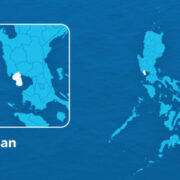Cordillera mountains key to knowledge transfer
LA TRINIDAD, BENGUET—Mt. Pulag is Luzon’s highest peak but it is also the mythical dwelling place of “Kabunian,” the supreme deity who showered indigenous Benguet communities with blessings.
By 2024, count free internet connections for schools among Kabunian’s many gifts.
Straddling Benguet and the provinces of Ifugao and Nueva Vizcaya, Mt. Pulag (at 2,928 meters above sea level) will serve as a key relay station alongside Baguio City’s Mt. Santo Tomas (2,260 masl) that will use microwaves to transmit internet data to most of the Cordillera.
Schools in the mountain region may start benefiting from the Cordillera Internet Connectivity project of the Department of Information and Communications Technology (DICT) by the first quarter of 2024, according to resource persons at the Education Convergence Conference hosted by the Cordillera regional office of the Department of Education (DepEd) on Dec. 5.
“Only 28 percent of the entire Cordillera has decent internet connectivity, and that is a problem for the DepEd and many towns and agencies,” said Allan Lao, the DICT technical operations division chief in the Cordillera, who spoke at the conference.Technology was quickly embraced by educators in the region to ensure that children continue to learn while locked down in their homes for almost two years because of the COVID-19 pandemic, said DepEd Cordillera Director Estela Leon Cariño, who presented the state of Cordillera education during the conference.
She said many schools had since adopted DepEd Cordillera’s Project Hyteq (Hybrid Learning using Technology with Equity and Quality), which uses a digital management system to combine in-person classes with virtual classrooms.
First phase
But for mountain villages to march toward full digitalization, they need a steady internet connection, Cariño stressed.The Cordillera provinces of Benguet, Ifugao, Kalinga, Apayao, Abra and Mountain Province are part of the first phase of forming the National Broadband Network, the internet highway to be governed by the Philippine government which still buys internet and cloud storage services from commercial firms, Lao said.
Since it began in 2015, the broadband project “has progressed so slowly,” he said. “[But] this December they will light up the tunnel where the line that comes from California (in the United States) connects to Baler town in Aurora province,” Lao said, adding that the broadband may be switched on by February.
The Baler line links to San Fernando City in La Union province and runs up to La Trinidad town in Benguet through the transmission lines of the National Grid Corp. of the Philippines. The national broadband would be accessed by Cordillera communities hrough a connection between La Trinidad and the DICT regional office in Baguio, as well as a future data center to be built at Camp John Hay which would become one of the country’s cloud storage facilities.But until the national broadband is fully operational, the DICT has rehabilitated an abandoned tower at Camp 2 near the Pulag summit to deliver internet services to Cordillera schools alongside a Santo Tomas radio tower, Lao said.
Luzon’s tallest mountains are high enough to send data to large parts of Ifugao and Benguet using conventional radio and shortwave radio that use microwave signals.
“If you scan the mountains and are able to set eyes on Pulag, that means [your school] is a priority beneficiary of the internet we are throwing off from Pulag,” Lao said.
For example, 54 sites in the Ifugao towns of Alfonso Lista, Asipulo, Banaue, Hingyon, Hungduan, Kiangan, Lagawe, Lamut, Mayoyao and Tinoc are within the line of sight of Pulag’s tower and form part of a “wireless mesh network.”Lao said the program would expand toward towns like Sagada in Mountain Province.
Abra has developed an independent wireless mesh project using the designs used by Pulag and Santo Tomas. Rinoc is financing the construction of a tower to catch the relays from Pulag and Santo Tomas.
More schools
“Last month, we went to Lucaben National High School (in the Benguet town of Bakun) to test the relay stations in Pulag and Santo Tomas. It can provide connectivity to all Benguet municipalities. By the first quarter of next year, we hope to link the first school to that area,” Lao said.These technologies, he pointed out, have been around since the year 2000 when the government first introduced digital payments and the digital signature to its processes. But it took a pandemic for Filipinos to actually use them, he said.
Technology-driven hybrid classes helped the DepEd overcome lingering problems that preceded the pandemic, like the region’s rugged terrain, which makes Cordillera schools too vulnerable to seasonal landslides and the distance students often endure when they walk to school.
The DepEd may receive one of the highest budgets each year, but the Cordillera’s share in 2023 was only P15.212 billion, Cariño said, noting that P12.6 billion was paid for salaries.
The P1.73-billion balance financed projects throughout the region, although schools also benefited from P64 million worth of donations from 2,521 private sector “partners,” she said. This year, 217 new classrooms were built, which cost less than P700 million.
Variations or modifications of the Hyteq concept were also developed in parts of the region, Cariño said. For example, the team of Soraya Faculo, the Baguio City Schools Division superintendent, has initiated the Smart Learning Communities program, which aims to turn all 67 public schools into “smart schools.” INQ

















